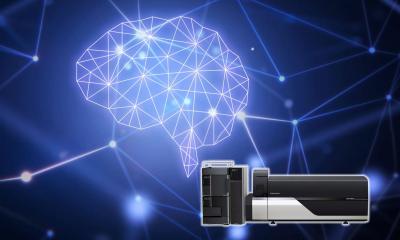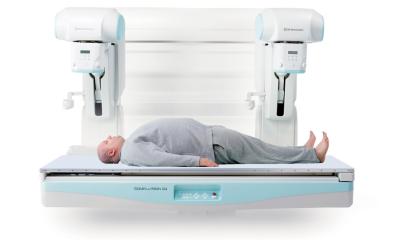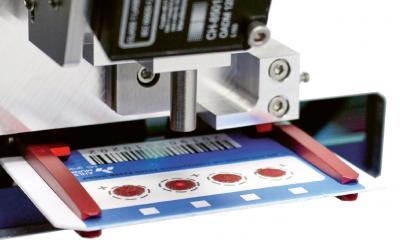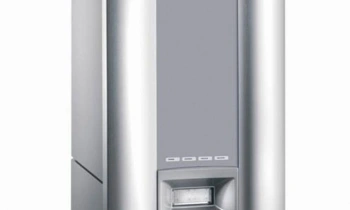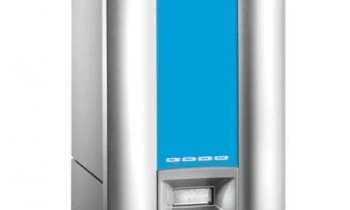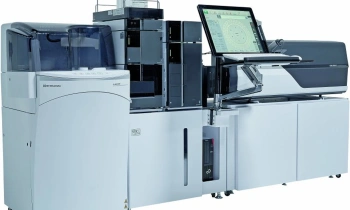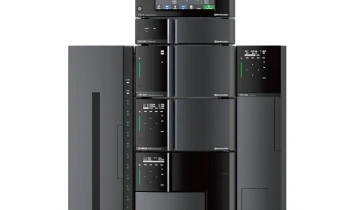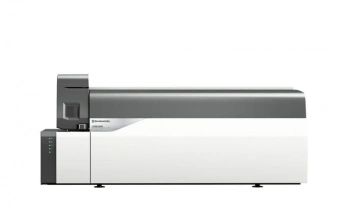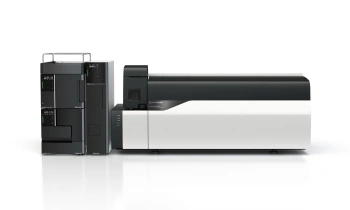News • New gargle test
Mass spectrometry to improve Covid testing
A UK biotech laboratory has used mass spectrometry in a new approach to coronavirus testing. MAP Sciences developed a gargle test, which collects samples from the back of the throat, and avoids the unpleasant sensation of the current PCR (polymerase chain reaction) swab tests. From there, the sample is tested for coronavirus using mass spectrometry (MS) with high levels of accuracy.

With an under one hour turnaround, the developers believe the test is quicker, easier, cheaper and as accurate as current PCR testing and has the ability to pick up other viruses – as well as Covid-19 – such as H1N1 flu.
Professor Ray Iles, Chief Scientific Officer of MAP Sciences, based in Bedford, UK, says the test has been validated, with data now being gathered for regulatory approval, using samples from trials at Addenbrooke’s Hospital in Cambridge and collaborators in the USA at Northern Illinois University. The company seeks to take its gargle test to market and, as part of the UK’s Covid-19 mass testing regime, to liaise with the country’s government, which aims to ramp up testing capacity to 500,000 a day by the end of October.
Having spent many years working in the university sector, setting up biomedical and health science facilities and as a Dean at Colleges of Health, Iles set up MAP Sciences five years ago with the vision that MALDI-ToF could move from the research lab to being the ‘go-to’ clinical diagnostic tool. Underpinning this is the amount of information available from MS, an analytical technique that measures the mass-to-charge ratio of charged molecules or ions.
Recommended article

Interview • Shimadzu Europa 50th anniversary
Mass spectrometry and ever more…
As Shimadzu celebrates its 50th anniversary in Europe, we spoke with Stéphane Moreau, Manager of LC-MS & Life Sciences at the Marketing Europe/Analytical Business Unit of Shimadzu Europa GmbH, about today’s and many more decades of exciting clinical developments.
Ionising whole proteins without fragmenting
MALDI-ToF MS utilises an advanced method of protein pattern recognition – obtained from blood, urine or saliva - to diagnose various diseases and health disorders and rapidly deliver test results economically. In a typical MS procedure, a sample is ionised by bombarding it with electrons. But this breaks them into many small fragments. In MALDI, whole proteins are ‘soft’ ionised without fragmentation, and can then be analysed as single intact ions, creating simpler spectra within the mass spectrometer. This enables complex biofluids samples to be analysed and subjected to re-interrogation for further results. Professor Iles said cost and time taken for diagnostics remains a major hurdle in global healthcare, but MS screening offers a quick and cost-effective alternative for a range of tests. MAP Sciences had initially developed the technology with a view to screening populations for haemoglobinopathies and the most common genetic diseases, such as sickle cell disease or alpha or beta thalassemia from a pin-prick blood test.
The biotech firm developed these tests and proved their validity with colleagues at Addenbrooke’s Hospital in Cambridge and Cam-bridge University, while also working with partners in the United Arab Emirates and the United States to confirm the technique works on their mass spectrometers.
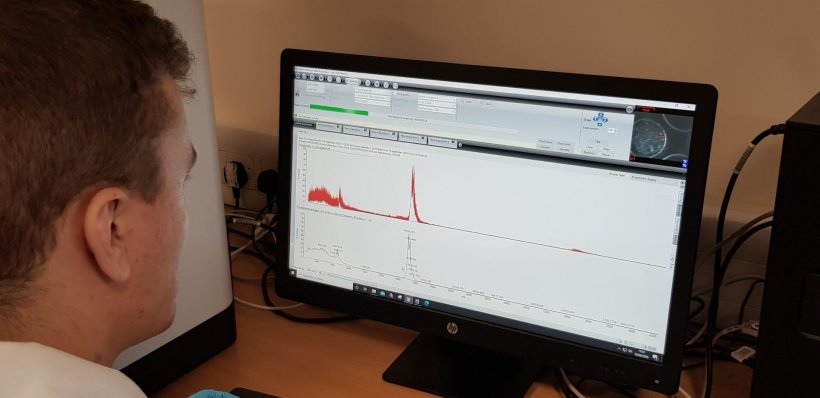
Then the coronavirus pandemic struck. However, this unexpectedly presented a new opportunity. ‘I always felt that the next step would be to use mass spectrometry and take samples and look for viruses, because viruses are packages of proteins,’ Iles explained. From early March, MAP Sciences teamed up with Professor Jonathan Heeney at Cambridge University to understand the biology of the virus, and developed the biochemical approach for a new MS Covid-19 test. The team specifically used the compact Shimadzu MALDI-ToF 8020 mass spectrometer to detect proteins associated with Covid-19 and created the new gargle test, which also overcomes the relatively unpleasant approach of PCR testing with swabs of the throat and up the nose.
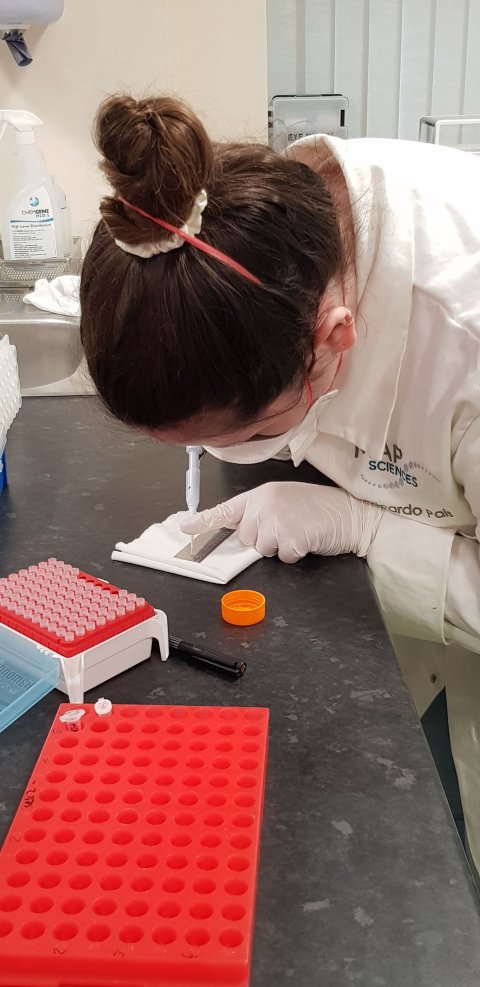
Someone with suspected Covid-19 gargles with 10mls of water for 30 seconds and spits into a pot, which is then delivered to the lab where ice cold acetone is added to the solution to kill the virus and cause precipitation of large molecules. The sample is spun in the centrifuge with a chemical solution added to break up the virus and release the viral proteins, and then transformed into a small pellet and placed on a matrix plate. It’s these viral proteins we look for to tell whether someone has Covid-19 or not, but it also means we can identify any other virus there as well – for example H1N1 flu.’
The matrix pellet is placed in the MALDI-ToF mass spectrometer. A readout on the computer screen produces peaks highlighting the presence – or absence – of the coronavirus, or any other virus. The mass spectrometer is looking for the SARS-CoV-2 Spike Glycoprotein-S1 Protein. ‘We’ll only get the S1 spike with virus being present,’ explained Iles, who adds that the gargle test is a fraction of the cost of the PCR swab test for coronavirus and sampling can be performed at home and sent through the post to laboratories.
How does the gargle test work?
‘What we’ve developed,’ Iles explained, ‘is ways of enriching the virus in the sample, breaking the viral envelope, releasing these large glycoproteins and then identifying these glycoproteins on the mass spectrometer.’
Mass spec – compact size and flexible software
With data still being collated, Iles maintains that the gargle MS test is as accurate, if not more so, as the PCR test, believed to be about 80% accurate and with an unclear false positive rate. ‘We are cheaper, we are faster and we are an alternative technique that can confirm or refute a PCR test. We also have quality controls in place and we are ready to go,’ the professor confirmed.
Iles favours the Shimadzu MALDI-ToF 8020 because of its software flexibility and compact size. It can conduct about 500 tests a day, meaning significant investment in MS hardware will be required if the gargle test is to contribute to the UK government’s testing aspirations, though Iles’ team is working closely with Shimadzu over potential modifications. Yet, he believes their sophisticated and affordable testing technology, with fewer consumables than other Covid-19 tests, will complement the simple binary Covid-19 tests currently in use and produce accurate results with fewer false positives as the global fight against coronavirus continues.
Profile:
Professor Ray Iles is Chief Scientific Officer with the MAP Sciences Group, which develops medical and digital diagnostics (https://mapsciences.com/). His specific expertise lies in the assessment and measurement of biomarkers in biological fluids, with a passion for the finer details of clinical diagnostics and the instrumentation, and in developing new techniques. With a BSc in Bioanalysis, MSc in Immunology, and PhD in Molecular Pathology, he is a Fellow of the Royal Society of Chemistry, the Society for Biology and a Chartered Biologist and the founding Dean of Abu Dhabi University’s College of Health Sciences.
18.11.2020



